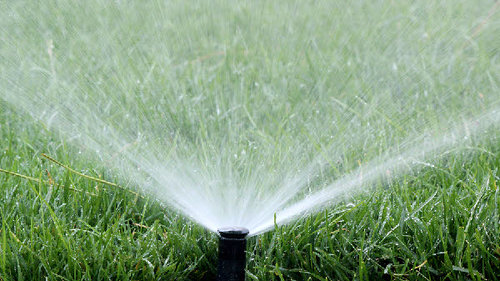Water Your Lawn the Right Way!

Is your irrigation effective?
Don’t you wish that watering your lawn was like a “one size fits all” t-shirt? Wouldn’t it be nice to follow one set of guidelines, set your irrigation unit once, and forget about the whole thing once and for all? Unfortunately, when it comes to watering the “set it and forget it” method does not apply.
The good news is that watering properly does not require a ton of work. Determine how much water your lawn needs and how often it needs it by considering how established your lawn is and what the soil is like. You will also need to pay attention to rainfall amounts (inches of rainwater after a storm)… sometimes you may not need to water at all!
WORDS FROM THE WISE, ABOUT RAIN SENSORS
If your irrigation system is not already outfitted with one, install a rain sensor to minimize your work. A rainfall sensor will automatically turn off your irrigation system when rain occurs, reducing the amount of water you use. This gadget benefits you two-fold, it reduces your water bill and minimizes the risk of your turf incurring any serious fungal issues associated with overwatering.
Overwatering is the most common mistake homeowners make. If you overwater in the heat of the summer, your lawn may contract any number of diseases. Stressed turf can, in turn, attract insects that will incur further damage. This is why proper watering is essential to both your lawn’s health… and keeping money in your wallet.
TESTING, TESTING, 1, 2, 3
Before we tell you how much to water your lawn and when to water, you should know what you’re starting with. Check your irrigation system by placing three to four rain gauges around your lawn. Run each zone and then make note of how many inches of water have been delivered to your plants. This will help you realize which zones are over and under performing.
WHEN TO WATER
Water your lawn early in the morning. Your sprinklers should go on between 4 a.m. and 7 a.m. Air temperatures are cooler at this time, meaning a lower rate of evaporation and more water to your turf. It is best to avoid watering in the middle of the night or after 8 a.m. Water left to sit on your turf in the middle of the night can lead to fungal issues, while water sitting on your grass blades during the heat of the day can magnify the sun and burn your turf.
WATERING NEW SOD
You should have one driving goal for your newly laid sod, develop the roots. As a general rule of thumb, you want to prevent the sod from drying out for the first two to three weeks. This means keeping your lawn constantly moist by watering two to three times a day. Sod installed in the summer can be watered up to four times a day for the first three weeks! After this period passes, you can begin to follow the watering guidelines for established lawns.
WATERING ESTABLISHED LAWNS
Your goal is to establish deep roots, so water your turf deeply and infrequently. Established lawns require 1-1 1/2” of water per week. Schedule your irrigation system to water every three to four days, this will support your goal to establish deep rooting. Each time your system runs, the irrigation should apply 1/2” to 3/4” of water. If you’re not sure how much water you are applying, use rain gauges to measure how much water is actually being delivered to your turf.